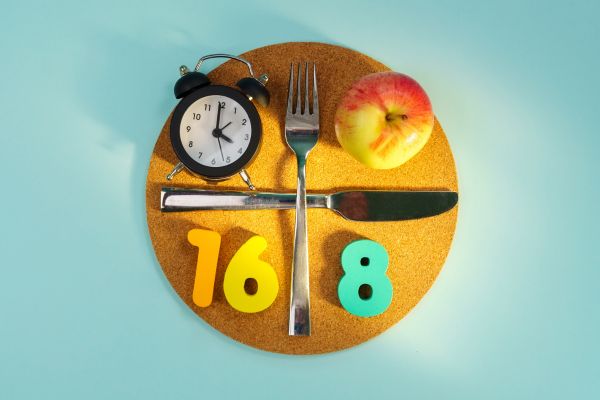In a world overflowing with fad diets and weight loss trends, the paleo diet for weight loss has emerged as a refreshing return to the basics. Rooted in the belief that modern health issues stem from our departure from the eating habits of our Paleolithic ancestors, this diet promises more than just a number on the scale. It offers a lifestyle rooted in natural, whole foods that our bodies were evolutionarily designed to process. If you’re seeking a sustainable way to lose weight without counting calories or restricting yourself to tasteless meals, understanding how the paleo diet works could be your first step toward real change.
Understanding the Paleo Philosophy
At its core, the paleo diet emphasizes consuming foods that would have been available to humans during the hunter-gatherer era. That means focusing on fresh fruits, vegetables, lean meats, fish, nuts, and seeds, while eliminating processed foods, grains, legumes, dairy, and refined sugars. This philosophy isn’t just about nostalgia for the Stone Age—it’s about reconnecting with the kind of diet that supports metabolic health, reduces inflammation, and promotes weight loss.
The paleo diet for weight loss stands apart from many modern diets because it emphasizes food quality over quantity. Instead of obsessing over calorie deficits, it encourages a natural, intuitive eating pattern where you fill your plate with nutrient-dense, satiating meals. This not only reduces cravings but also helps balance hormones that regulate hunger and fat storage.
Why the Paleo Diet Promotes Weight Loss
There are several compelling reasons why the paleo diet is effective for weight loss. First and foremost, it naturally eliminates many of the high-calorie, low-nutrient foods that contribute to weight gain. Refined carbohydrates, sugars, and processed snacks are entirely absent from the paleo menu, which helps stabilize blood sugar levels and curb appetite swings.
Another key factor is the emphasis on protein. A diet rich in lean meats and seafood helps increase satiety, making you feel full for longer periods. This reduces the temptation to snack or overeat. Additionally, higher protein intake supports the maintenance of lean muscle mass, which plays a crucial role in metabolism. The more muscle you have, the more calories you burn—even at rest.
Moreover, the paleo diet is naturally lower in carbohydrates compared to a typical Western diet. While it doesn’t strictly restrict carbs, it encourages the consumption of carbs that are high in fiber and nutrients, such as sweet potatoes and fruits. These foods digest more slowly, preventing spikes in insulin that can lead to fat storage.
The Role of Whole Foods in Fat Loss
Whole foods are the foundation of the paleo diet, and they play a significant role in weight management. When you eat whole, unprocessed ingredients, your body is better able to regulate hunger hormones like leptin and ghrelin. This internal regulation system is often disrupted by processed foods, which are engineered to be hyper-palatable and addictive.
The paleo approach removes this obstacle by simplifying your meals. When your plate consists of vegetables, quality proteins, and healthy fats, your body naturally tells you when it’s full. You become more attuned to hunger cues and less reliant on emotional or mindless eating.
In addition, paleo meals are generally rich in fiber from vegetables and fruits. Fiber is essential for digestive health and helps regulate bowel movements, which can contribute to a flatter stomach and less bloating. It also slows digestion, which helps control hunger and enhances nutrient absorption.
Breaking Free from Diet Dogma
One of the reasons the paleo diet for weight loss has such a loyal following is that it liberates people from the rigid rules that dominate many other diet plans. There’s no need to count calories, track macros, or follow complicated meal plans. Instead, the focus is on making smarter choices that align with what our bodies were naturally built to handle.
That freedom can be incredibly empowering. It transforms the way people think about food, turning meals into an opportunity to nourish rather than restrict. By cutting out foods that often lead to overeating and inflammation, the paleo lifestyle helps many regain control over their health without the psychological burden of deprivation.
Furthermore, many who follow the paleo diet report improved energy levels, clearer skin, better sleep, and reduced joint pain. These benefits, while not directly tied to weight loss, contribute to a positive feedback loop. When you feel better physically, you’re more likely to stick with the lifestyle and stay active, both of which support continued fat loss.
Staying Committed to the Paleo Lifestyle
Transitioning to a paleo diet for weight loss does require a shift in mindset. Many modern conveniences, such as takeout meals, packaged snacks, and sugary beverages, must be replaced with home-cooked, whole-food alternatives. While this may seem daunting at first, the rewards are well worth the effort.
Preparation becomes essential. Stocking your kitchen with paleo-friendly staples like grass-fed meats, fresh vegetables, coconut oil, and herbs can make mealtime easier and more enjoyable. As you become more comfortable with paleo cooking, you’ll likely discover new favorite meals and develop a deeper appreciation for real food.
Staying committed also means being flexible and realistic. The paleo diet isn’t about perfection—it’s about consistency. Life happens, and there may be times when sticking to strict paleo isn’t possible. What matters is getting back on track without guilt and focusing on the long-term benefits rather than short-term slip-ups.
The Science Behind Paleo and Weight Loss
While anecdotal success stories abound, scientific research also supports the effectiveness of the paleo diet for weight loss. Several studies have shown that people who adopt a paleo-style eating pattern tend to lose more weight and experience greater improvements in metabolic markers compared to those on low-fat or standard diet plans.
One of the reasons for this is the reduction in insulin resistance, which is closely linked to fat storage. By eliminating refined sugars and grains, the paleo diet helps improve insulin sensitivity, allowing the body to use glucose more efficiently and store less fat.
Additionally, studies have noted that the paleo diet can lead to improvements in blood pressure, cholesterol levels, and triglycerides—all of which are markers associated with metabolic health. These improvements suggest that the paleo diet does more than help people lose weight; it also supports a healthier internal environment that makes maintaining weight loss easier over time.
A Natural, Sustainable Approach to Losing Weight
In a society where weight loss often feels like a battle against your own body, the paleo diet offers a refreshing alternative. Rather than promoting restriction, it encourages nourishment. Rather than relying on artificial meal replacements or rigid tracking, it embraces real food and intuitive eating.
The paleo diet for weight loss is more than just a trend—it’s a philosophy grounded in simplicity, sustainability, and science. It reconnects people with the food their bodies truly need and creates a foundation for long-lasting health and wellness. If you’re ready to stop cycling through diet after diet and want a strategy that aligns with your body’s natural rhythms, the paleo diet might be the key you’ve been searching for.
By choosing a paleo lifestyle, you’re not just losing weight—you’re reclaiming your vitality, redefining your relationship with food, and stepping into a more energized, empowered version of yourself.



